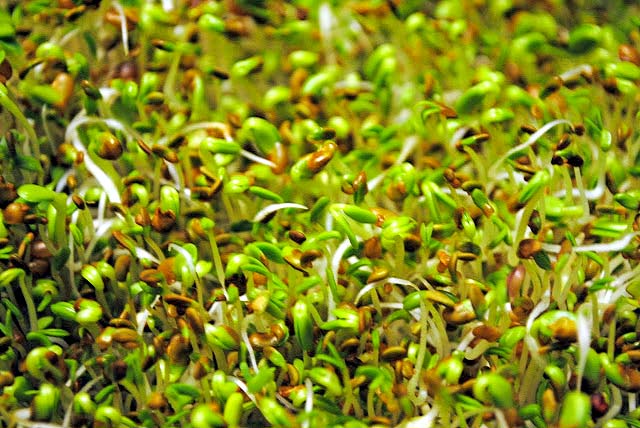
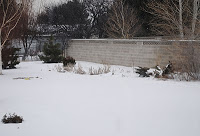 Starting your own sprouts at home is easy and fun. It can put a smile on your face, especially in the winter, because something fresh and green is growing! Sprouts are great to add to salads and sandwiches and will give your diet a nutritional boost.
Starting your own sprouts at home is easy and fun. It can put a smile on your face, especially in the winter, because something fresh and green is growing! Sprouts are great to add to salads and sandwiches and will give your diet a nutritional boost.Often when we think of sprouts we think of alfalfa sprouts or even mung bean sprouts, but there’s a whole other world of seeds to sprout for eating outside of those two favorites. How about radish sprouts? Those are my personal favorite because they add some unexpected heat. Your tongue will wonder what in the heck just happened to a seemingly ordinary tossed salad with sprouts.
Wheat sprouts, on the other hand, are soft and sweet. Whenever I eat them, I think “Oh, that’s nice. Eating these feels right.” Wheat has that power over me.
Another of my favorites is lentil sprouts. Lentils have a slight peppery flavor and aside from enjoying them as sprouts I really enjoy them in lentil soups and lentil salads. They are such a great little legume!
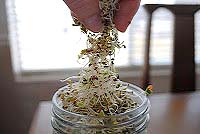 Sprouting seeds can be purchased alone or in mixes. My favorite mix includes alfalfa, clover, radish, and cabbage. It’s like eating a garden.
Sprouting seeds can be purchased alone or in mixes. My favorite mix includes alfalfa, clover, radish, and cabbage. It’s like eating a garden.
Check your local health food stores for sprouting seeds. If none are available, then use the internet. One of the sites that I have found particularly helpful with information about sprouting is Sprout People. In addition to lots of how-to information, they also offer seeds and a few other items for sprouting. Check them out on You Tube as well.
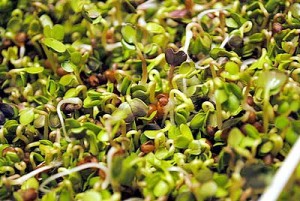 Despite the fact that there are gadgets available for sprouting, the only equipment you need is a jar, a piece of cheese cloth, and a rubber band. That’s it. Plus some sprouting seeds and regular old tap water. In only four days you can have a quart jar full of sprouts from only 2 tablespoonsful of seeds. So amazing!
Despite the fact that there are gadgets available for sprouting, the only equipment you need is a jar, a piece of cheese cloth, and a rubber band. That’s it. Plus some sprouting seeds and regular old tap water. In only four days you can have a quart jar full of sprouts from only 2 tablespoonsful of seeds. So amazing!
DO NOT get sprouting seeds confused with seeds that you buy for growing your vegetable garden. Generally vegetable garden seeds are not appropriate for sprouting.
Here are the big How-To’s for growing your own sprouts. This is the uber easy method; nothing but a glass jar, cheesecloth, and a rubber band are needed…in addition to the sprouting seeds, of course, and some water.
/
Day 1
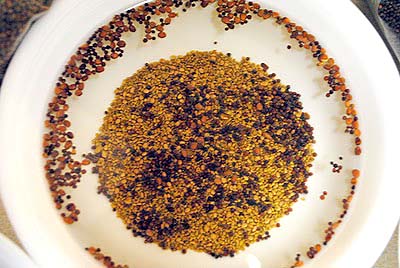
This is a seed mixture of radish, alfalfa, cabbage and clover seeds.
Start by soaking about 2 tablespoonsful of sprouting seeds. The seeds can be soaked in a bowl or in a jar. I chose to soak my seeds in bowls this time because, well, its just what I did. I changed my mind the next morning and realized that I ought to have started some in the glass jar(s) that I would be using for this post. Sometimes my brain lags a little behind my enthusiasm.
If you are sprouting small seeds such as alfalfa, broccoli, clover, radish, etc., use about 2 tablespoonsful of seeds. On the other hand, if you are growing bean seeds or lentils, use about 1/4 cup. Put the seeds in the container of your choice. Add enough tepid water (barely warm) to the seeds to cover them by 2-inches. Soak for 8-12 hours. Don’t worry if some of them float. Poke them with your finger to encourage them to sink to the bottom of the bowl. There will be those who will be stubborn and insist on floating. Forget about them and walk away.
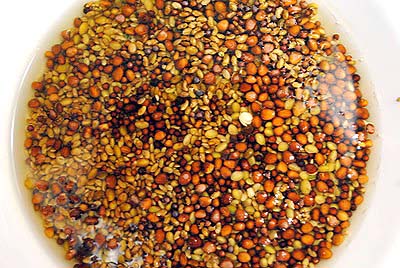 |
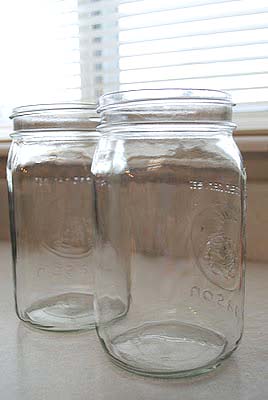
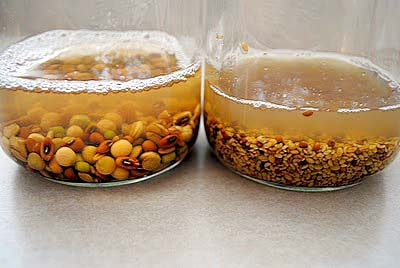
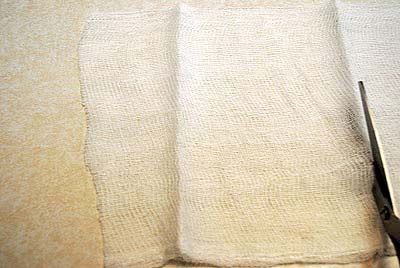
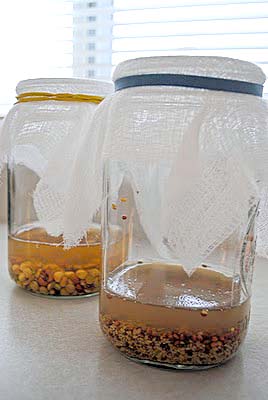
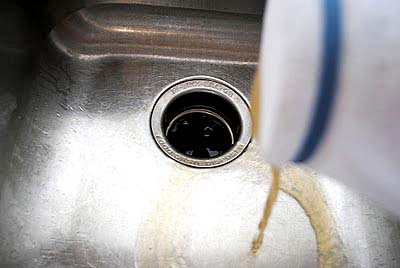
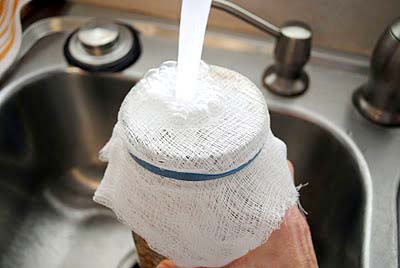
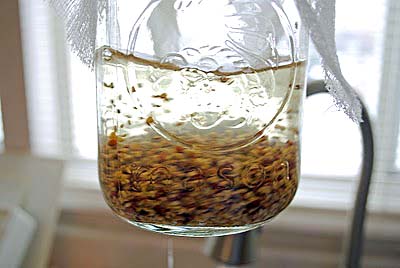

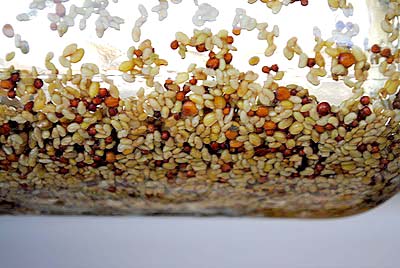
//Day 2
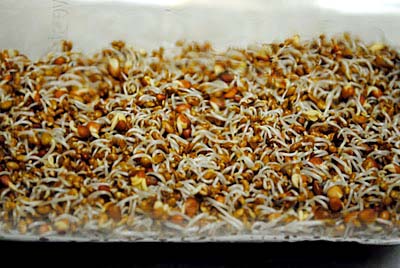
Day 3
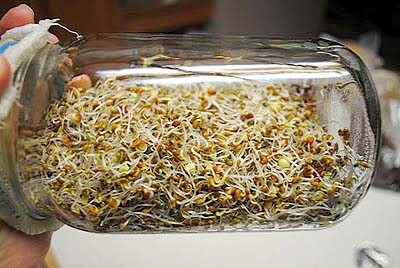
/Day 4

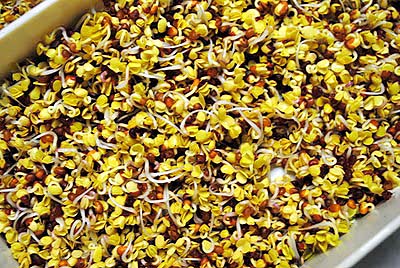 |
| These sprouts are yellow because they have not been exposed to light. |
/
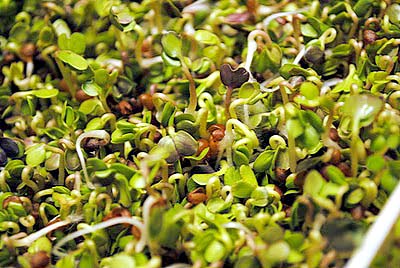 |
| After a couple of hours in the light, the chlorophyll in the leaves has given the sprouts a beautiful green color …and in some cases purple. |
/

 |
| These particular trays come with a divider so that two different types of sprouts can be grown at the same time. |
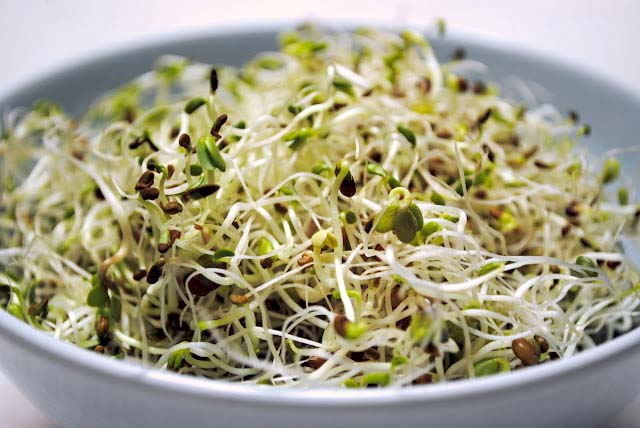
You may also like:





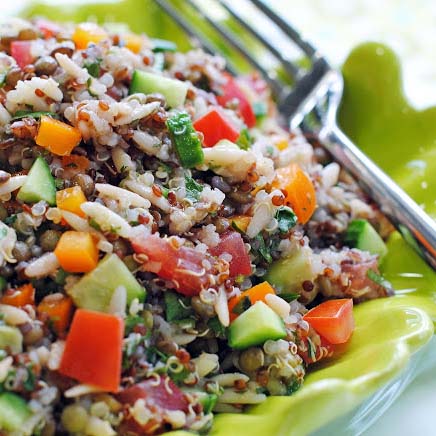
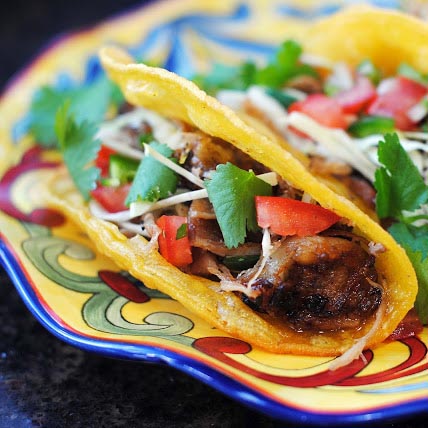
Leave a Reply